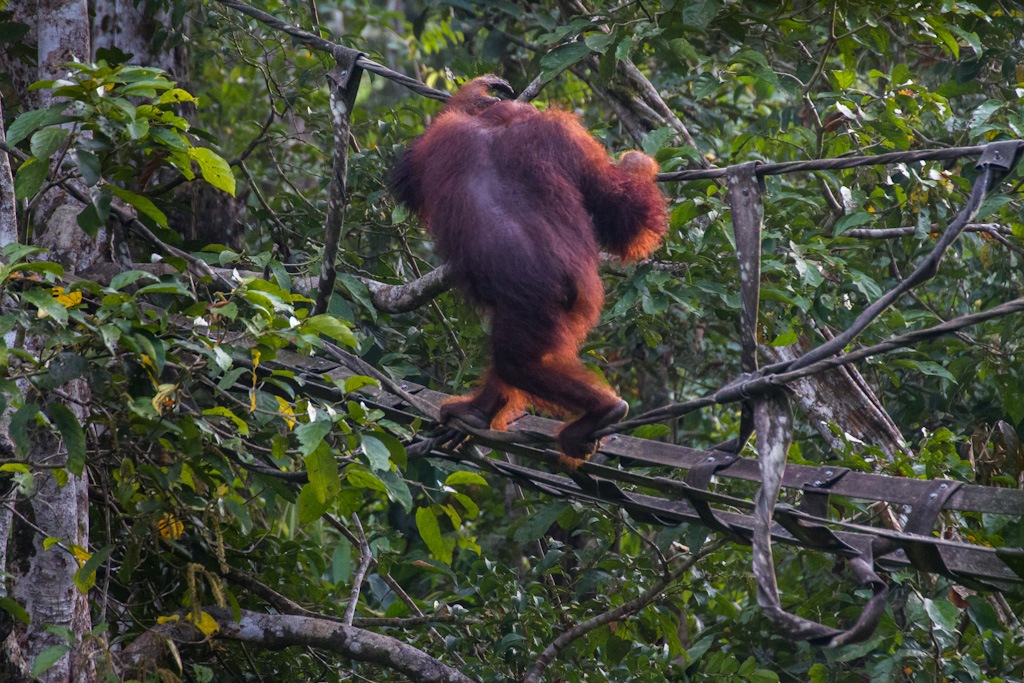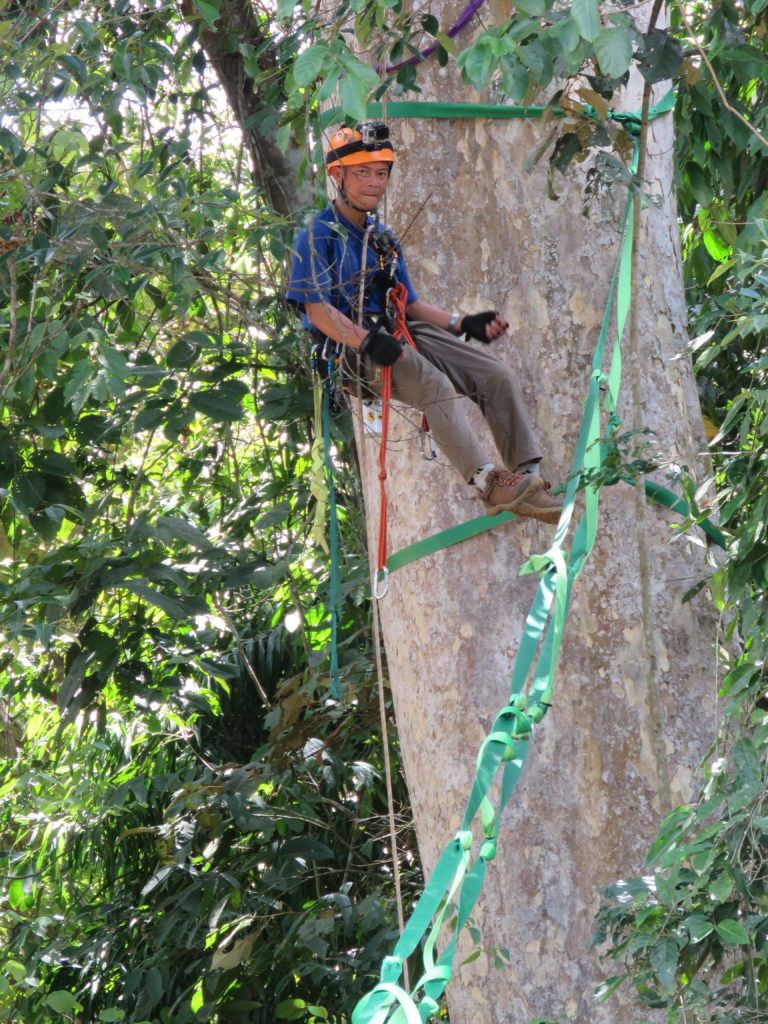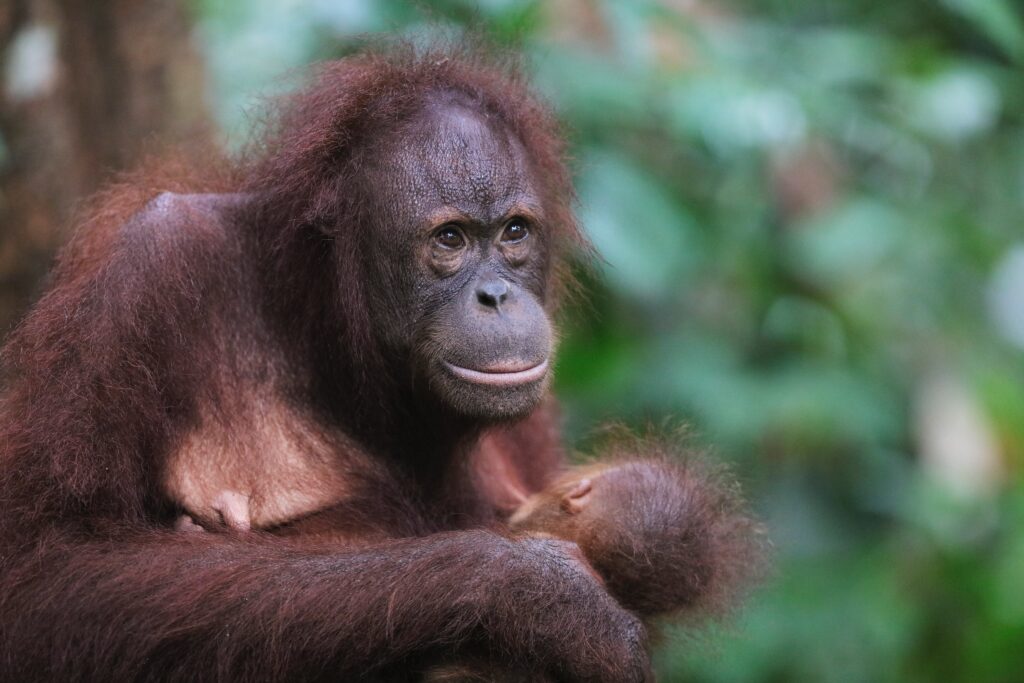“It’s a bird!” “It’s a plane!” Not quite… it’s an orangutan! In the forests of the Kinabatangan region of Malaysian Borneo, you might spot a shaggy, reddish-orange, long-haired orangutan swinging through the canopy with ease. But despite their Cirque du Soleil skills up in the trees, a few major barriers at ground-level have confined orangutans’ habitat range in recent years.
In a forest landscape that has been heavily altered by palm oil development, most tall trees have been removed along riverbanks and tributaries. Orangutans cannot swim, so without the overhanging branches of old growth trees, even a small stream can become a barrier, keeping male and female orangutans from connecting. To solve this problem, a local conservation organization, HUTAN, came up with a simple, yet incredibly effective innovation – installing rope bridges high up in the treetops, providing safe passage for orangutans to cross bodies of water.
Connectivity across orangutan populations is critical to ensure the species’ long-term viability. If orangutans cannot move freely within their home range, they lose access to vital resources, and lack the ability to mate with other orangutans, which leads to a decrease in genetic diversity. A lack in genetic diversity can have disastrous effects on a species whose numbers are already declining. These rope bridges reconnect fragmented forest patches, preventing orangutan populations from becoming isolated.
HUTAN has documented other wildlife using these bridges as well, including long tailed macaques, langurs, gibbons, and proboscis monkeys. Of course, artificial bridges are only a short-term solution. “Using rope bridges is a quick fix but eventually the most ideal solution would be to reconnect the forest, and we are all working on this. And when I say ‘we’ I mean everyone, from the governmental sector, to environmental NGOs, and crucially, the palm oil industry as well,” said wildlife veterinarian Dr. Marc Ancrenaz, the Co-Director of HUTAN.
To demonstrate the commitment to all parties being involved in conservation, HUTAN collaborates with the PONGO Alliance, a coalition of oil palm growers, businesses, and NGOs, who jointly advocate for and support the conservation of orangutans and other wildlife within oil palm landscapes. Sawit Kinabalu, an oil palm grower, actually helped finance the construction of one of these bridges, demonstrating the power of collaboration across sectors to achieve conservation outcomes for wild orangutans. Other bridges were built with several zoo partners working with HUTAN and the Sabah Wildlife Department.
In addition to installing bridges, HUTAN’s conservation efforts include monitoring wild orangutan populations, expanding protected areas in the region, planting trees for reforestation, raising environmental awareness through education, and creating a paradigm shift in agricultural and business-as-usual practices to bring in more partners to join the cause for conservation.
HUTAN was a guest speaker at WCN’s 2019 Fall Expo and they are currently crowdfunding to print a children’s book about orangutan conservation, called Through the Treetops, for free distribution to local schools in Malaysia. By supporting their campaign, you can help HUTAN continue to connect orangutan habitat and ensure a future for this magnificent species.





